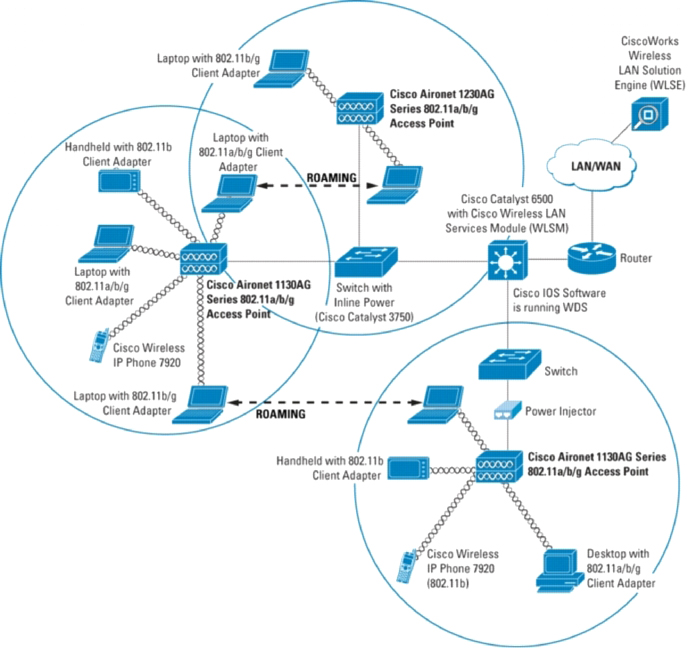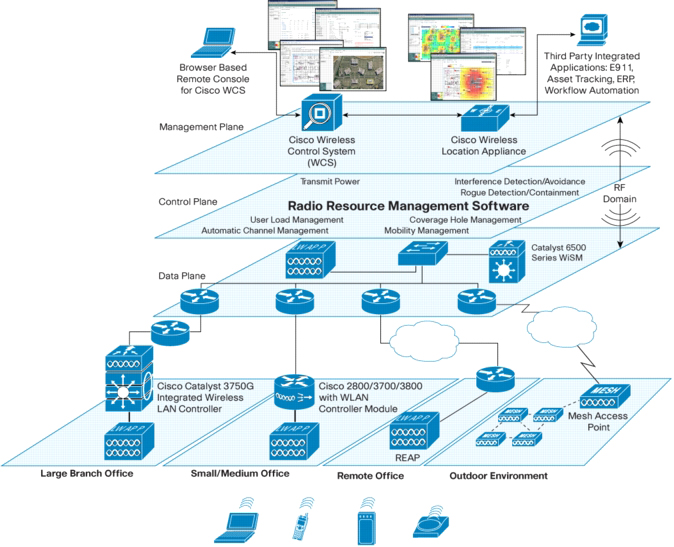VARIETY OF WIRELESS SOLUTIONS
Access points are critical elements of the Cisco® Unified Wireless Network. Cisco single- and dual-band access points are designed for offices and similar environments, challenging RF environments, and the outdoors. The devices are available in two versions: unified or autonomous. Unified access points operate with the Lightweight Access Point Protocol (LWAPP) and work in conjunction with Cisco wireless LAN controllers and the Wireless Control System (WCS). Autonomous access points are based on Cisco IOS® Software and may optionally operate with the CiscoWorks Wireless LAN Solution Engine (WLSE). Autonomous access points, along with the WLSE, deliver a core set of features and may be field-upgraded to take advantage of the full benefits of the Cisco Unified Wireless Network as requirements evolve.
To make the best choices for their particular applications, it is important to understand the features and benefits of the different Cisco Aironet® access points.
BENEFITS:
- Lowered total cost of ownership due to centralized management, simplified deployment, and a unified wired and wireless architecture;
- Decreased operations and staff training costs because the network management interface is simplified and easy to use;
- Improved network security from built-in security alerts and real-time monitoring of potential attacks, threats, and breaches;
- Real-time detection, location, and containment of unauthorized access points and client devices;
- Integrated management for indoor WLANs and outdoor wireless mesh networks;
- Acceleration of business collaboration and productivity through mobility services that support innovative business applications.
DEPLOYMENT:

Pic. 1. Autonomous Access Point Deployment

Pic. 2: Unified Access Point Deployment
The main challenge of Unified Access Point Deployment (Pic2) is the ability to manage and secure wireless networks with limited IT staff across hundreds of remote sites. The Cisco Wireless LAN Controller Modules, along with LWAPP-enabled Cisco Aironet access points, address the deployment and operational challenges of enterprise wireless networking at remote sites by eliminating the need to configure and manage each individual access point. In addition, the Cisco WCS can be used to manage hundreds of remote sites with Cisco wireless LAN controller modules.
Unified Access Point Deployment is essential for Cisco IP Telephony and Nokia Call Connect.
